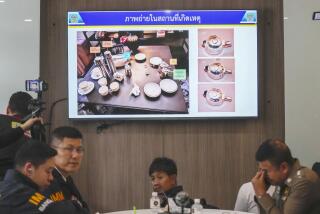Deaths of Asians in Sleep Still a Mystery
- Share via
WASHINGTON — Almost a decade after the syndrome was first reported, doctors still do not know the causes of a rare affliction that kills young male Southeast Asian refugees as they sleep.
In 1981, the Centers for Disease Control began tracking a mysterious rash of sudden unexplained nocturnal deaths occurring in apparently healthy, male immigrants from Vietnam, Laos and Cambodia. The problem, unknown in other ethnic groups, has now claimed more than 104 men, averaging 33 years of age, and one woman, according to Dr. Gib Parrish, a CDC medical epidemiologist.
Ninety-eight percent of the deaths occurred between 10 p.m. and 8 a.m.
26 Deaths in Peak Year
In 1981, the peak year of these deaths, 26 men, often Hmong refugees from the highlands of northern Laos, died in their sleep.
Usually victims were simply found dead, but when medics arrived quickly, the men’s hearts were fibrillating or contracting wildly, a symptom Parrish said may result from numerous possible causes.
Dr. Ronald Munger, an epidemiologist at the University of Minnesota, said the epidemic of unexplained deaths of the refugees has declined sharply in the United States as Southeast Asian immigration has declined but that the problem is still common in refugee camps in Thailand.
Many theories have been proposed as to the causes of the deaths, including genetic, anatomical and psychological factors.
Suspects Poor Diet
Munger, noting that the death rates subside the longer refugees are in the United States, said his hypothesis is that the deaths are the legacy of poor diet in refugee camps or Asian homelands. This June he will present at a conference results of studies he has done on sudden deaths in Thai refugee camps.
Parrish favors a theory combining anatomical or genetic susceptibility exacerbated by the new immigrants’ stress.
Munger said when early seizures have been observed and reported by relatives, emergency personnel, who have never seen such a problem in young, otherwise healthy men, often do not take it for the life-threatening situation that it is.
More to Read
Sign up for Essential California
The most important California stories and recommendations in your inbox every morning.
You may occasionally receive promotional content from the Los Angeles Times.












